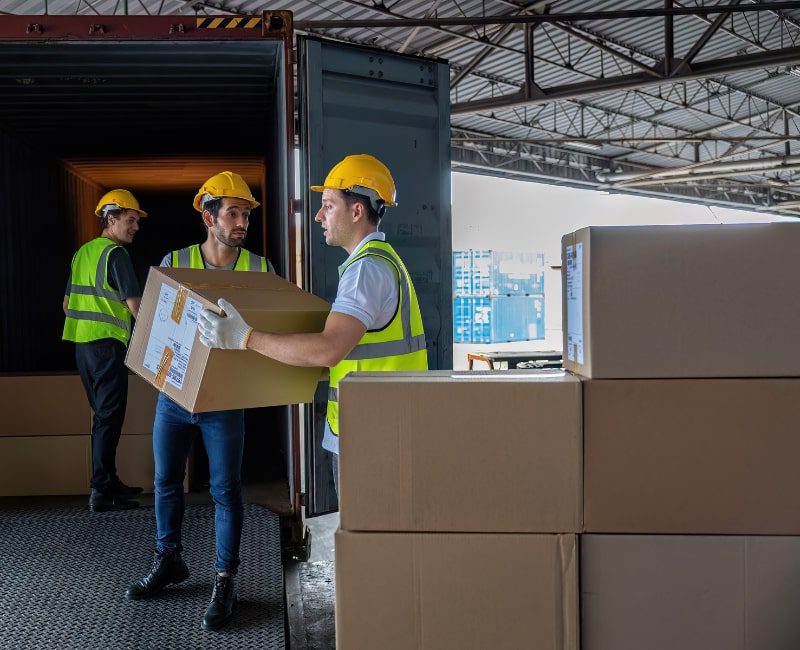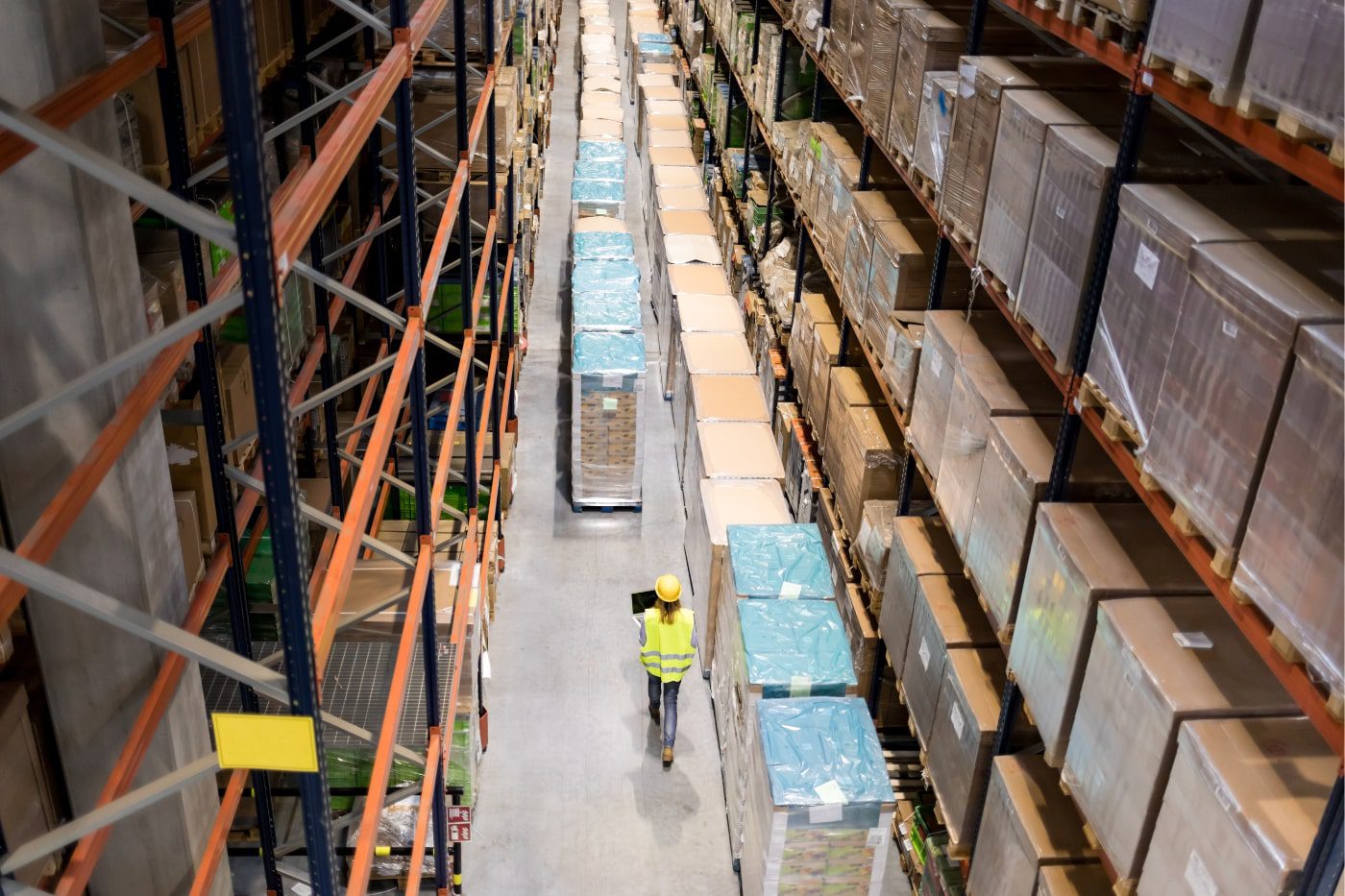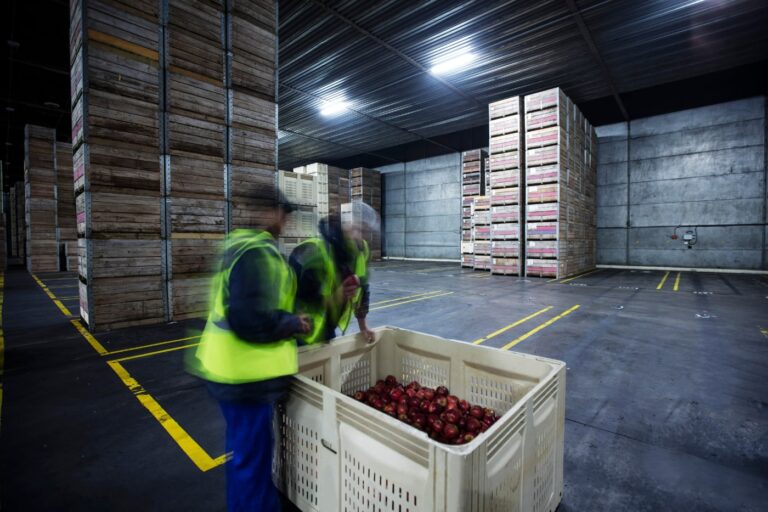Efficient logistics plays a pivotal role in cost management, customer satisfaction, and overall business success. As businesses navigate the complex web of the supply chain, many struggle to decide whether to entrust the logistics responsibilities to a third-party logistics provider (3PL) or to take charge by managing an in-house warehouse.
Each option presents its own set of advantages and challenges and influences the operational dynamics of a business. In this article, we’re diving into this decision-making process to explore the intricacies of relying on a 3PL for logistics solutions versus the autonomy and control that comes with managing one’s own warehouse. This comprehensive guide is for businesses looking to optimize their logistics strategies and make informed decisions that align with their unique needs and objectives.
Understanding Third-Party Logistics
As businesses explore logistics outsourcing, a foundational understanding of what a third-party logistics (3PL) provider is becomes essential. And, according to Accion Performance, more than 75% of companies opt to outsource their logistics to 3PL providers. So, let’s shed some light on the role of a 3PL and the diverse range of services it brings to the table.

What is a 3PL?
A 3PL, short for third-party logistics, is an external service provider that specializes in managing and executing various logistics functions on behalf of businesses. These functions span the entire supply chain, from procurement and transportation to warehousing and distribution. Essentially, a 3PL serves as an extension of a company’s logistics arm, streamlining operations and enhancing efficiency through specialized expertise and resources.
Key Services Provided by 3PLs
Transportation Management: One of the fundamental services offered by 3PLs is transportation management. This involves the strategic planning, optimization, and execution of the physical movement of goods from origin to destination. 3PLs leverage their network of carriers, technology solutions, and industry expertise to ensure that products are transported efficiently, cost-effectively, and in adherence to specific timelines.
Warehousing and Distribution: 3PLs play a pivotal role in warehousing and distribution, providing businesses with access to state-of-the-art facilities for storing goods. These facilities are strategically located to facilitate the timely and cost-effective distribution of products. 3PLs manage inventory, order picking, packing, and shipping, offering a comprehensive solution for businesses looking to optimize their supply chain.
Order Fulfillment: By taking charge of order processing, picking, packing, and shipping, 3PLs ensure that customer orders are fulfilled accurately and promptly. This contributes to improved customer satisfaction and allows businesses to focus on core activities, leaving the intricacies of order fulfillment in capable hands.
Benefits of Outsourcing to a 3PL
Outsourcing logistics to a 3PL comes with many advantages – from cost savings to the ability to adapt to market dynamics swiftly. Businesses can tap into the specialized knowledge and resources of 3PL providers, allowing them to enhance efficiency, reduce operational costs, and navigate the complexities of the supply chain with greater agility. Here are some benefits businesses can expect if they choose to outsource to a 3PL:
Cost Efficiency: Outsourcing to a 3PL can lead to cost savings through economies of scale, shared resources, and optimized logistics operations.
Expertise and Specialization: 3PL providers bring industry expertise and specialized knowledge, allowing businesses to leverage the skills of professionals in logistics and supply chain management.
Scalability: Businesses can easily scale their operations up or down based on fluctuating demand, without the need to invest in additional infrastructure or resources.
Focus on Core Competencies: Outsourcing logistics enables businesses to concentrate on their core competencies, leaving the complexities of supply chain management to experts.
Advanced Technology: 3PLs often invest in state-of-the-art technology and systems, providing businesses access to advanced tools for inventory management, order processing, and transportation optimization.
Global Reach: Many 3PL providers have a widespread network, facilitating international logistics and helping businesses expand their reach into global markets.
Risk Management: 3PLs help mitigate risks associated with logistics, including transportation delays, inventory management challenges, and regulatory compliance, allowing businesses to operate more resiliently.
Flexibility and Adaptability: Outsourcing logistics provides flexibility to adapt to changing market conditions, allowing businesses to respond quickly to shifts in demand, supply chain disruptions, or other external factors.
Improved Customer Satisfaction: With efficient order fulfillment, accurate inventory management, and timely deliveries, outsourcing to a 3PL contributes to enhanced customer satisfaction and loyalty.
Access to Resources: Businesses gain access to a broader range of resources, including transportation networks, warehousing facilities, and a skilled workforce, without the need for significant upfront investments.
Managing Your Own Warehouse
While outsourcing to a third-party logistics provider (3PL) can offer a range of benefits, some businesses opt for the autonomy and control that comes with managing their own warehouse. Understanding the nuances of in-house warehouse management is crucial for businesses to make an informed decision tailored to their specific needs and objectives. In this section, we’re exploring the advantages, challenges, and key considerations associated with this approach.

Pros and Cons of Owning a Warehouse
Understanding the nuances of in-house warehouse management is crucial for businesses to make an informed decision tailored to their specific needs and objectives. Here are some pros and cons of managing your own warehouse:
Control and Customization:
Pros: Owning a warehouse provides businesses with unparalleled control over every aspect of the logistics process. It allows for customization of storage, handling, and distribution processes based on specific product requirements and business strategies.
Cons: The level of control comes with increased responsibility, requiring meticulous oversight and management. Customization efforts may demand substantial time and resources.
Capital Investment:
Pros: Investing in a warehouse allows businesses to build equity and assets. It can be a strategic long-term investment that contributes to the overall value of the company.
Cons: The upfront capital required for acquiring or constructing a warehouse is substantial. This financial commitment may pose challenges for smaller businesses or those with budget constraints.
In-House Operations:
Pros: In-house management offers direct supervision of daily operations, facilitating immediate responses to challenges and opportunities.
Cons: Warehouse operations entail various challenges, including staffing issues, inventory management complexities, and the need for efficient processes. Overcoming these challenges requires significant time, effort, and expertise.
Key Considerations for Warehouse Management
If businesses choose to handle logistics within their own warehouse, the following considerations are essential in ensuring successful supply chain management.
Facility Location: The location of the warehouse significantly impacts transportation costs, delivery times, and overall logistics efficiency. Proximity to suppliers, customers, and transportation hubs should be carefully considered.
Technology and Automation: Implementing advanced technology and automation systems enhances operational efficiency. Warehouse management systems (WMS), robotics, and automated inventory tracking contribute to accuracy and speed in handling goods.
Staffing and Training: The success of warehouse management hinges on a skilled and well-trained workforce. Adequate staffing levels, ongoing training programs, and effective communication are essential for smooth operations and meeting customer demands.
Cost Analysis
From the initial investment to ongoing operational expenses, understanding the financial implications of a 3PL provider versus managing your own warehouse is important for making a well-informed decision aligned with business objectives.

Comparative Cost Analysis
A comparative cost analysis can help guide businesses through the financial aspects of choosing between outsourcing logistics and managing their own warehouse. So, let’s compare the costs associated with each approach.
Initial Investment:
Outsourcing to a 3PL: Typically involves lower upfront costs, as businesses do not need to invest in acquiring or constructing warehouse facilities. The focus is on service agreements and operational expenses.
Managing Own Warehouse: Requires a significant initial investment in acquiring or building warehouse infrastructure, including land, building construction, technology systems, and equipment.
Ongoing Operational Costs:
Outsourcing to a 3PL: Involves predictable and scalable operational costs, with the 3PL responsible for facility maintenance, staffing, and technology investments. Allows for better cost control and forecasting.
Managing Own Warehouse: Encompasses ongoing operational expenses such as utilities, maintenance, staffing, and technology upgrades. Businesses bear the responsibility of managing and optimizing these costs.
Return on Investment (ROI) Considerations
Analyzing the return on investment is a critical step in determining the financial viability of the chosen logistics approach.
Outsourcing to a 3PL: While the initial costs may be lower, businesses should assess the overall efficiency gains, service quality, and the impact on customer satisfaction. Consideration should also be given to the flexibility and scalability offered by the 3PL.
Managing Own Warehouse: Businesses must evaluate the long-term ROI, factoring in the initial investment, ongoing operational costs, and the potential for increased control and customization. The timeline for realizing returns should align with the business’s strategic objectives.
Risk Management
As businesses navigate the decision between outsourcing logistics or managing operations themselves, the consideration of risk management is critical. Understanding the risks associated with each approach is pivotal for not only making the choice but also developing resilient logistics strategies that mitigate potential challenges.

Risks Associated with 3PL Outsourcing
Dependence on Third-Party: While outsourcing logistics to a 3PL provides expertise and efficiency gains, dependence on an external entity may pose risks if the 3PL encounters challenges or disruptions. Businesses relinquish a degree of control, and if their 3PL provider isn’t a good fit, this can potentially impact the ability to promptly address issues, modify processes, or adapt to unforeseen circumstances.
Data Security Concerns: Reputable 3PLs invest in robust security measures. Outsourcing can enhance data security through professional management and adherence to industry standards. However, entrusting sensitive data to a third party introduces potential vulnerabilities. Businesses must carefully evaluate the data security protocols of potential 3PL partners to safeguard against breaches.
Risks of Managing Own Warehouse
Market Fluctuations: Owning a warehouse allows for direct control over inventory levels and production, but unexpected economic shifts, changes in demand, or disruptions in the supply chain can lead to excess inventory, obsolescence, or shortages, posing financial risks. Navigating these fluctuations demands astute forecasting, agile supply chain management, and a proactive approach to risk mitigation.
Operational Risks: In-house management offers immediate control over daily operations, enabling quick responses to challenges. However, operational risks include workforce management issues, equipment breakdowns, and unforeseen disruptions, requiring robust contingency plans to maintain operational continuity. Robust contingency plans and training programs, as well as investments in preventive maintenance, are essential to maintain operational continuity.
Making the Decision
When making the final decision, immediate operational needs and long-term business goals must be evaluated. Navigating this decision-making process requires a thorough understanding of the unique needs of your business and a forward-thinking approach to logistics management.

Evaluating Business Needs and Goals
Before making a decision, businesses must conduct a thorough assessment of their current and future needs. This involves understanding the intricacies of their supply chain, the nature of their products, and the expectations of their customer base. Key considerations include the volume and nature of goods being handled, geographic reach, seasonality, and the importance of customization in logistics processes. By aligning the decision with the specific needs and goals of the business, you can ensure that the chosen logistics approach is a tailored fit for your business’ unique operational requirements.
Considerations for Long-Term Strategy
Choosing between outsourcing and in-house logistics management extends beyond immediate operational considerations; it requires a forward-looking perspective aligned with long-term business strategy. Businesses should evaluate the scalability of their chosen approach, considering growth projections, market expansions, and potential changes in product lines. Additionally, the decision should align with broader organizational goals, including customer experience objectives, sustainability initiatives, and overall competitiveness in the market. A robust understanding of the long-term vision allows businesses to make a decision that positions them strategically for future success.
Customizing the Logistics Approach
Logistics management is never one-size-fits-all, and businesses must customize their approach based on their unique requirements. Whether outsourcing to a 3PL or managing an in-house warehouse, customization is key to optimizing operations. This involves tailoring logistics processes to align with the specific needs of the business, incorporating technology solutions that enhance efficiency, and implementing agile strategies that can adapt to evolving market dynamics. By focusing on a tailored logistics approach, businesses can optimize their supply chain for maximum effectiveness and competitiveness.
Discover Your Path to Operational Excellence
Logistics serves as the backbone of any business, influencing its ability to meet customer demands, optimize costs, and stay competitive in the market. From procurement and production to distribution and delivery, effective logistics ensures the right products reach the right place at the right time. In an era where customer expectations are soaring, and global supply chains are intricately interconnected, the significance of streamlined logistics operations cannot be overstated. It becomes the cornerstone of customer satisfaction, fostering loyalty, and ultimately impacting the bottom line.
As you navigate the path to refining your logistics strategy, we invite you to explore how Hanzo Logistics can be your trusted partner in optimizing supply chain operations. Our comprehensive services cater to a diverse range of needs, offering expertise, efficiency, and tailored solutions. Make an informed choice today and embark on a journey of streamlined and effective logistics management with Hanzo Logistics.



